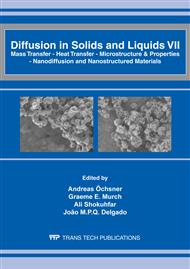p.504
p.509
p.515
p.520
p.525
p.530
p.536
p.542
p.547
Evaluation of Inconel 718 Creep Behavior
Abstract:
Superalloys are used primarily in aerospace applications. These applications require a material with high mechanical strength, good resistance to fatigue and creep, good corrosion resistance and ability to operate continuously at elevated temperatures. These alloys were developed for elevated temperature service, where relatively severe mechanical stressing is encountered, and where high surface stability is frequently required. Inconel 718 has being investigated because it is one of the most widely used superalloys. Constant load creep tests were conducted on a standard creep machine at 600 and 700°C and stress levels of 300 MPa. Sets of curves and experimental parameters for the primary, secondary and tertiary regions, as a function of stress and temperature applied were obtained. The ductility, the creep rate and lifetime was evaluated.
Info:
Periodical:
Pages:
525-529
Citation:
Online since:
April 2012
Keywords:
Price:
Сopyright:
© 2012 Trans Tech Publications Ltd. All Rights Reserved
Share:
Citation:


